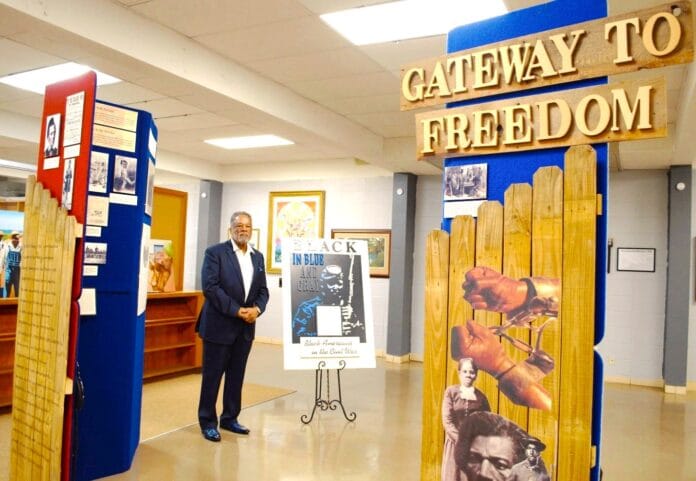
Opens January 3rd Through February 2025
On January 1, 1863, President Abraham Lincoln signed the Emancipation Proclamation: “All persons held as slaves within any States…in rebellion against the United States,” it declared, “shall be then, thenceforward, and forever free.” (The more than 1 million enslaved people in the loyal border states and in the Union-occupied parts of Louisiana and Virginia were not affected by this proclamation.) It also declared that “such persons [African American] of suitable condition, will be received into the armed service of the United States.” For the first time, Black soldiers could fight for the U.S. Army.
When the Civil War broke out, abolitionists such as Frederick Douglass argued that the enlistment of Black soldiers would help the North win the war and would be a huge step in the fight for equal rights: “Once let the Black man get upon his person the brass letters, U.S.; let him get an eagle on his button, and a musket on his shoulder and bullets in his pocket,” Douglass said, “and there is no power on earth which can deny that he has earned the right to citizenship.” Douglass and other black leaders felt strongly that allowing blacks to fight for the Union in the Civil War would be the “Gateway to Freedom.”
Through rare photos and interpretive text, the exhibit explores black soldiers both free and former slaves who fought valiantly as well as black leaders including men and women who played a significant role in the Union’s victory over the Confederacy.
The exhibit is on display at the Chattanooga Civic Center Mountainside in the Event Hall, 701 Hooker Road, Chattanooga, TN 37410. Call 423-331-8878 to schedule group visits and tours. Tax deductible donations to the Mary Walker Historical & Education Foundation are appreciated and can be made at marywalkerfoundation.org.
